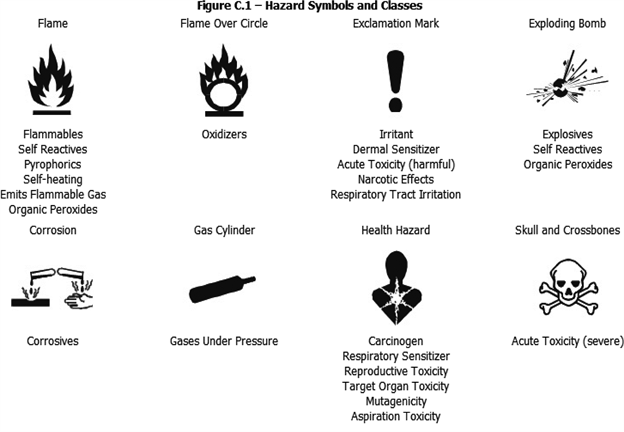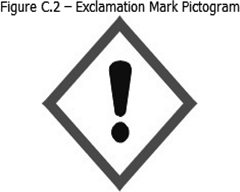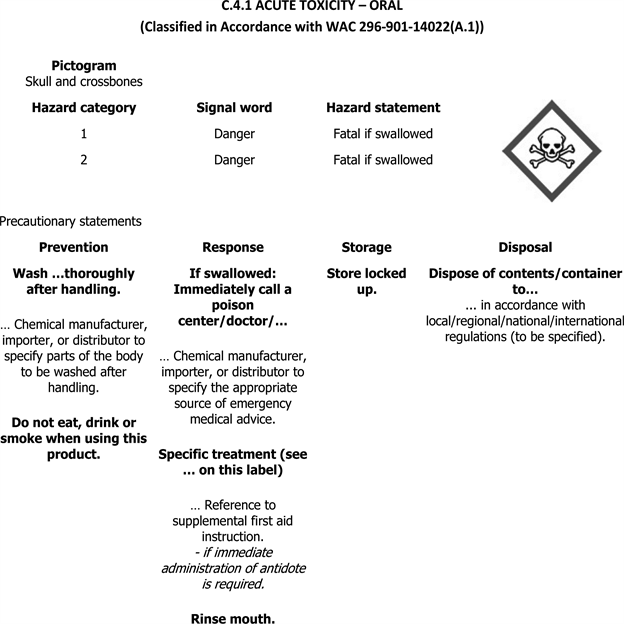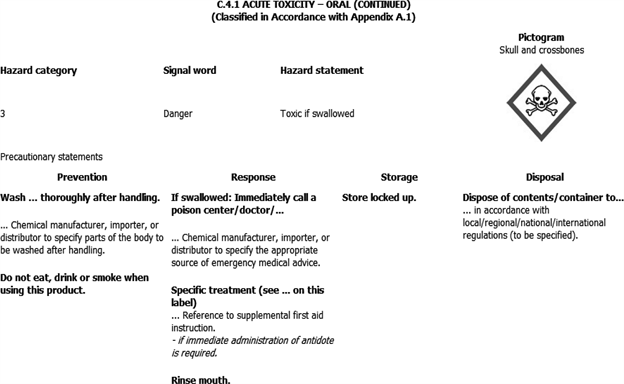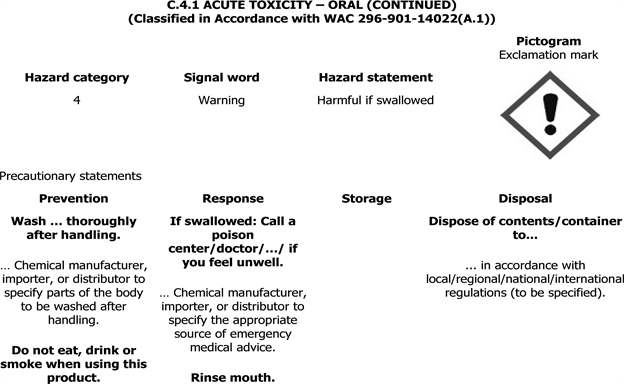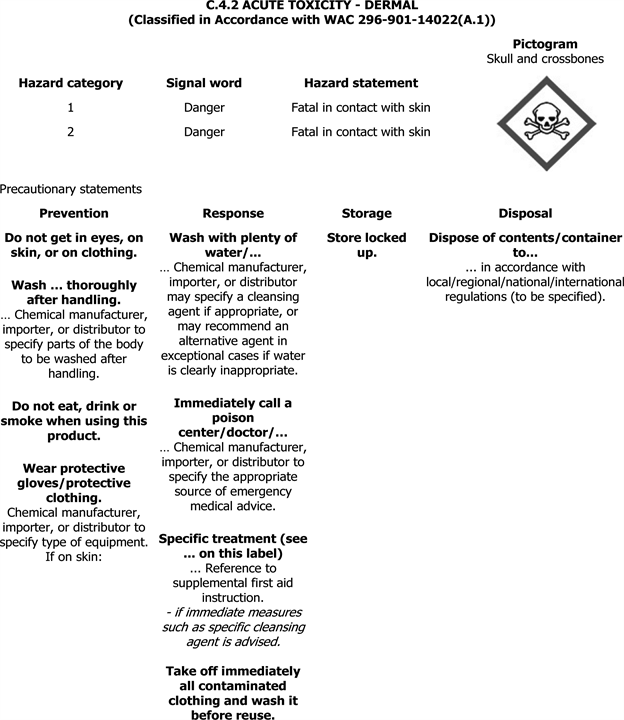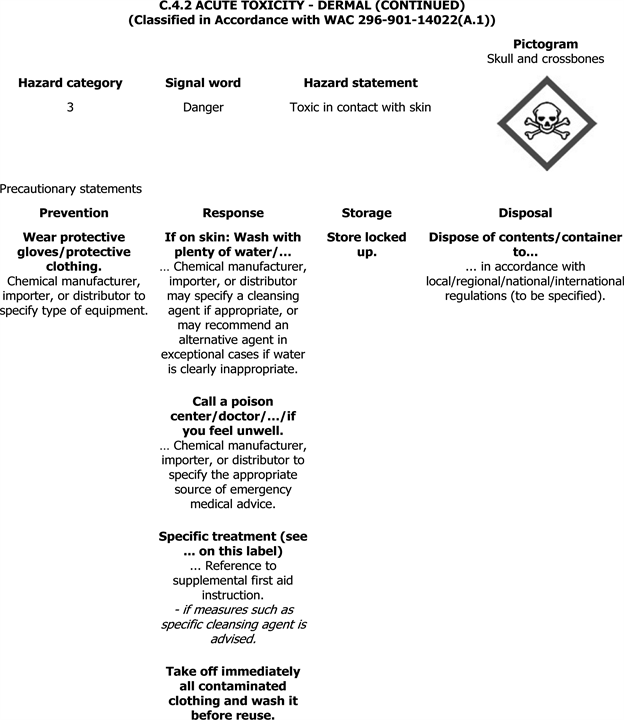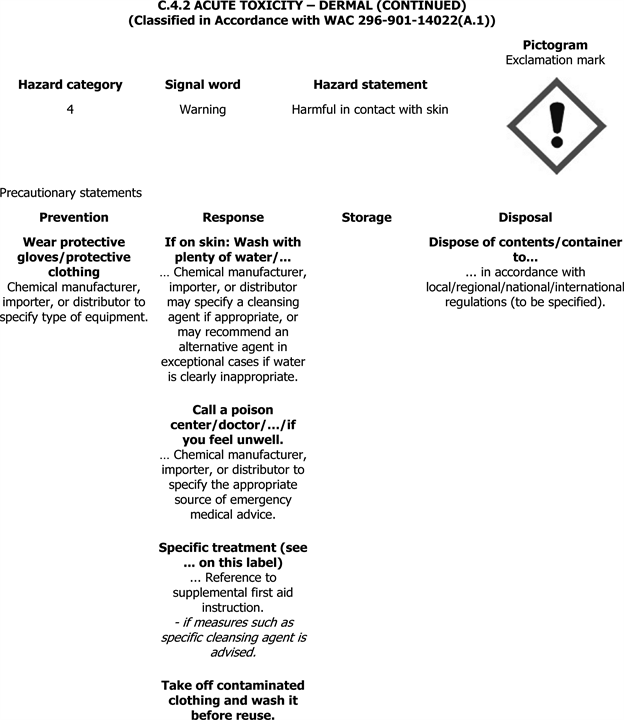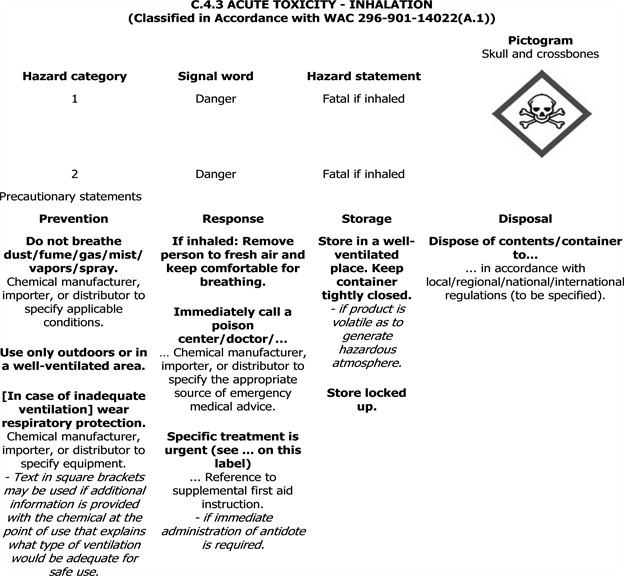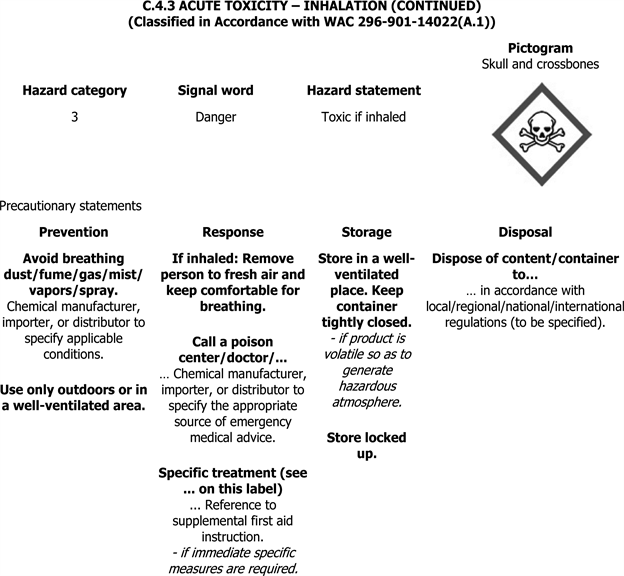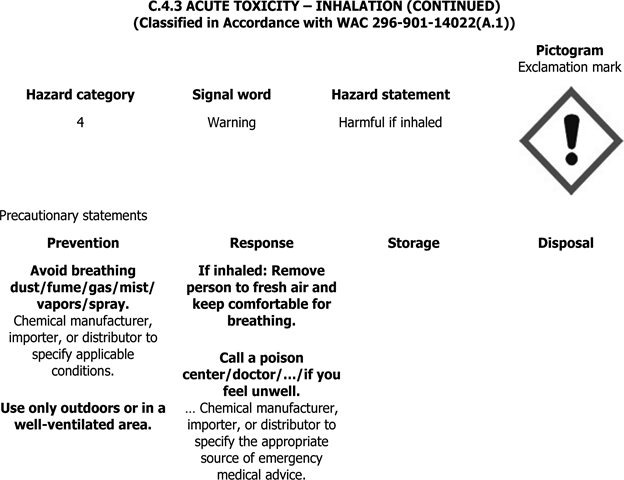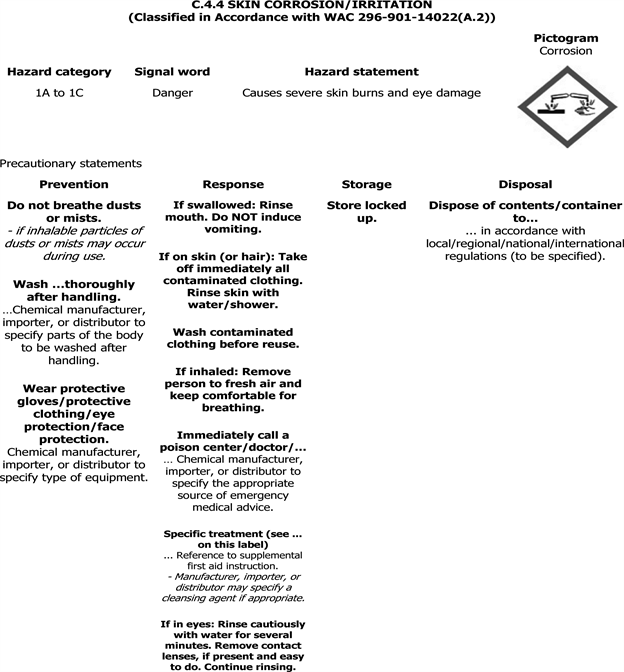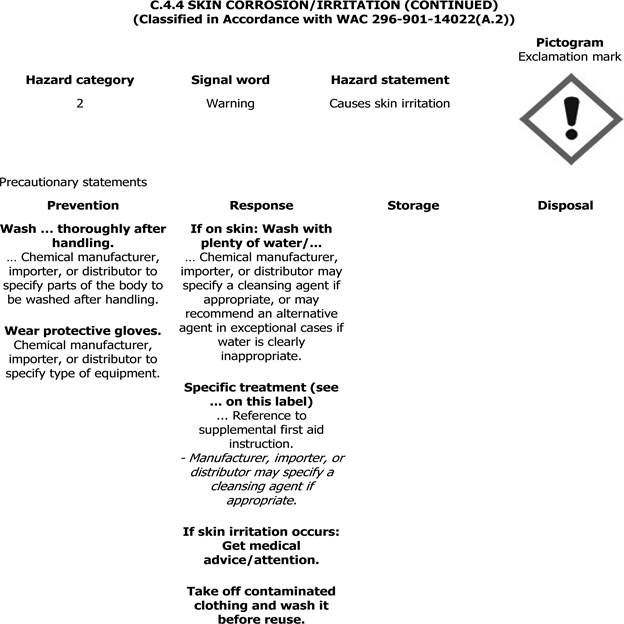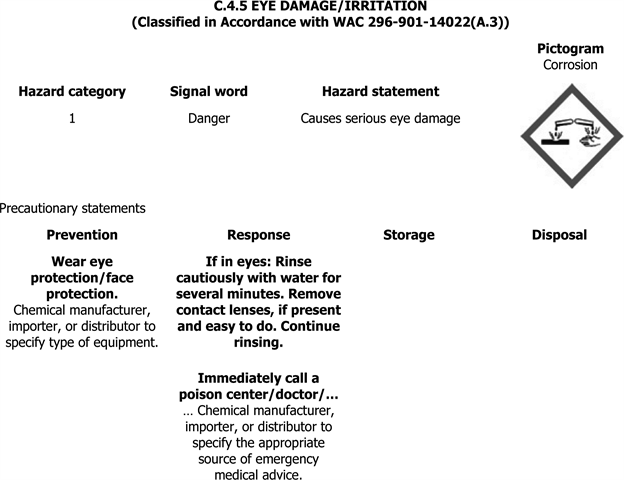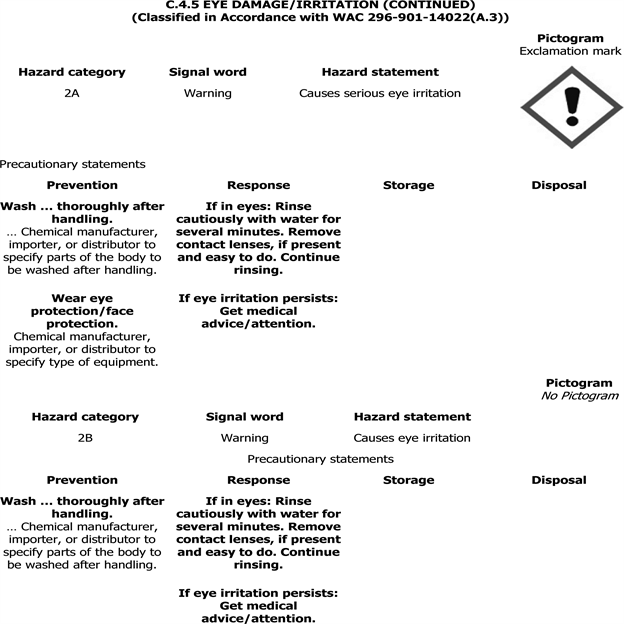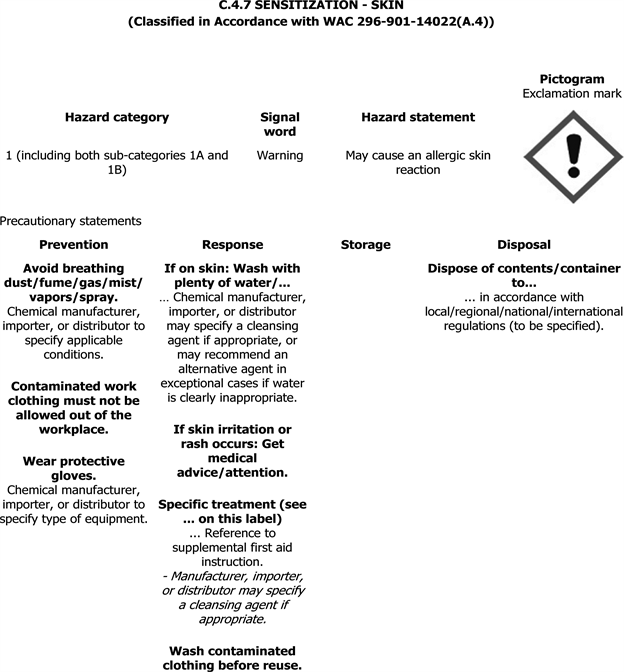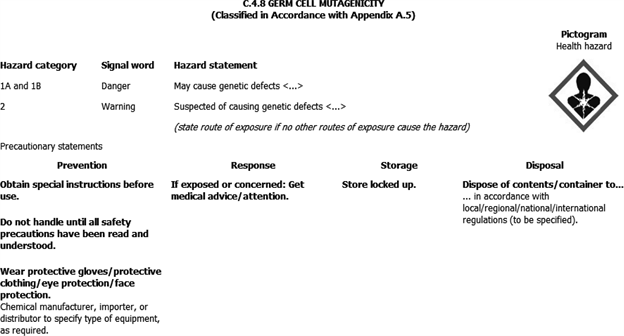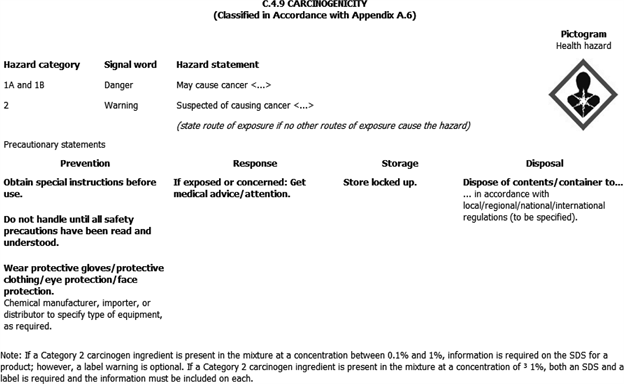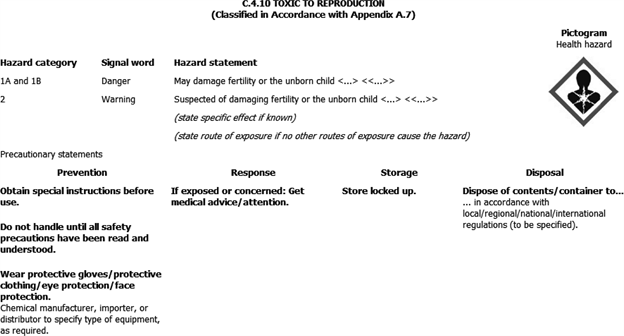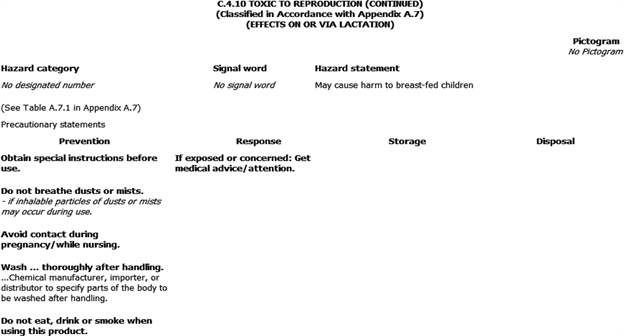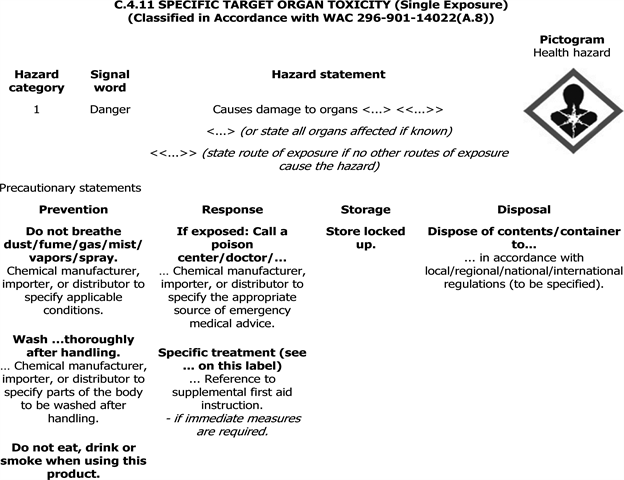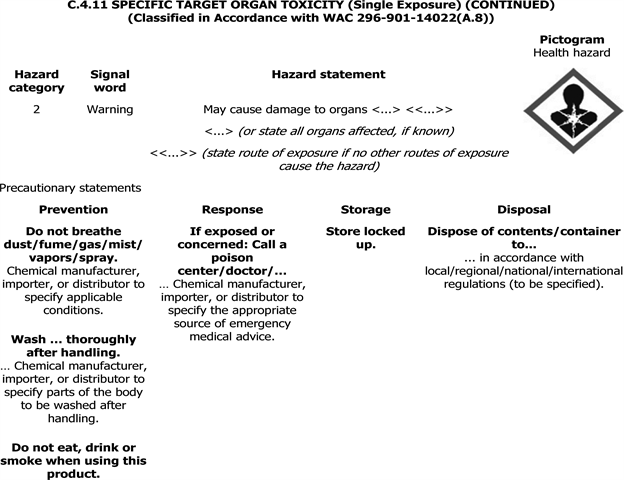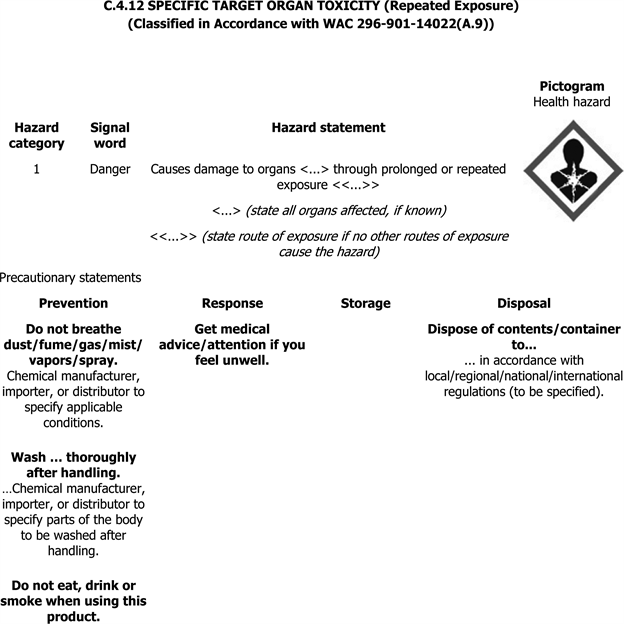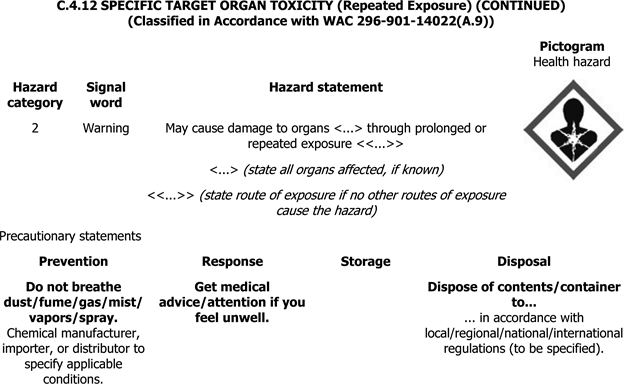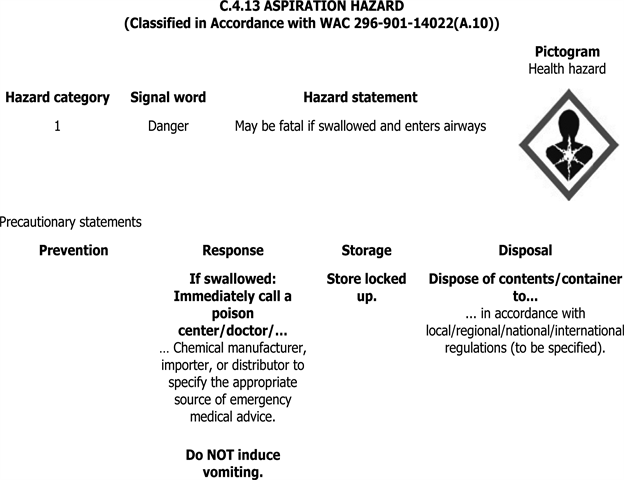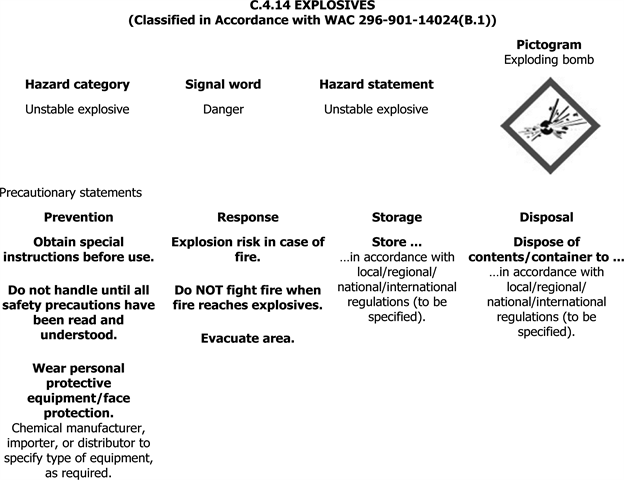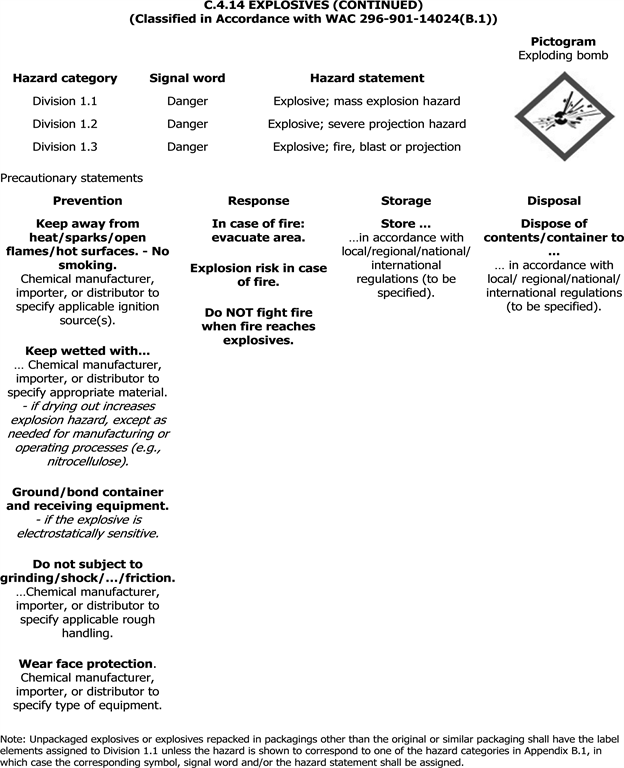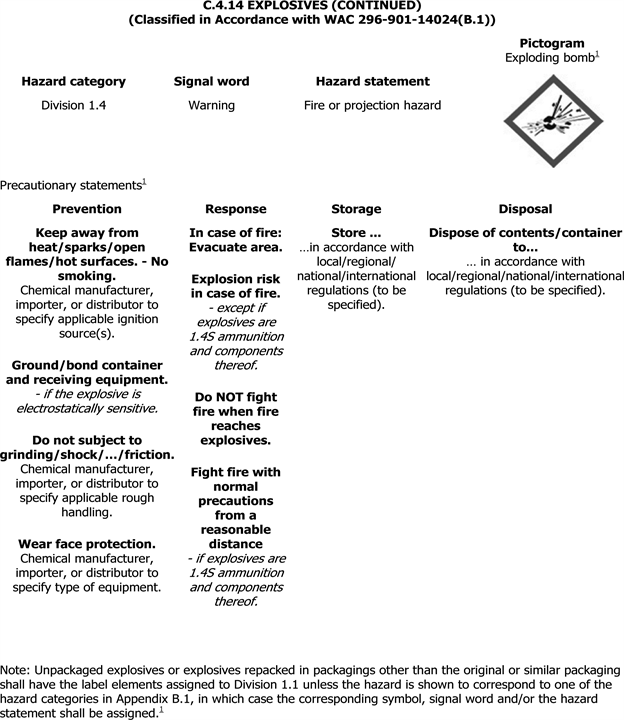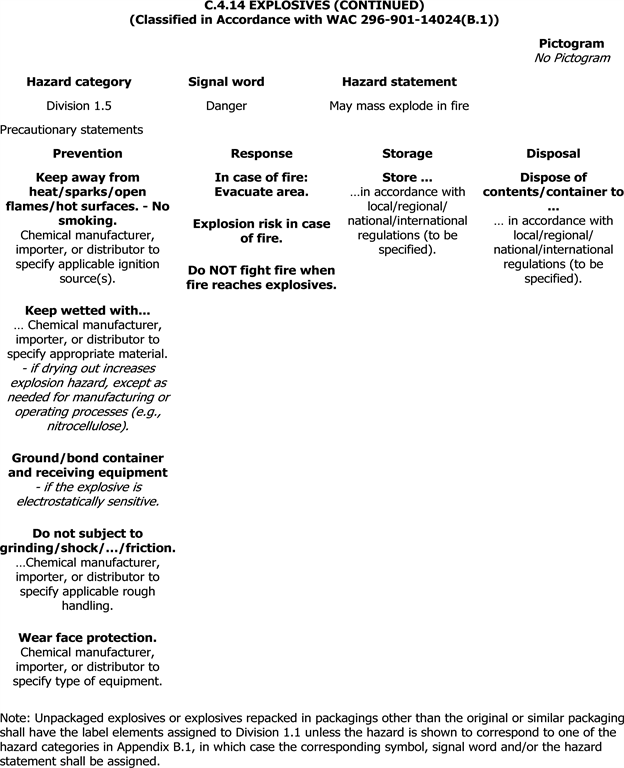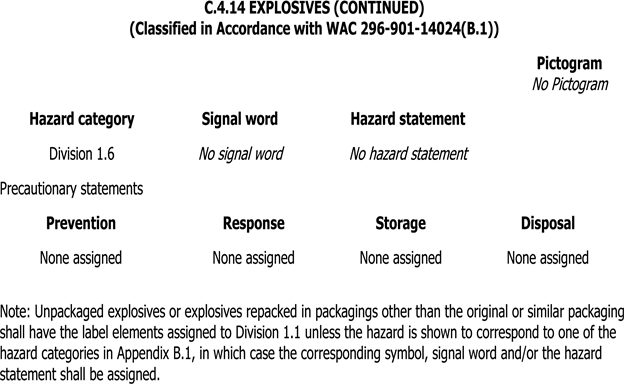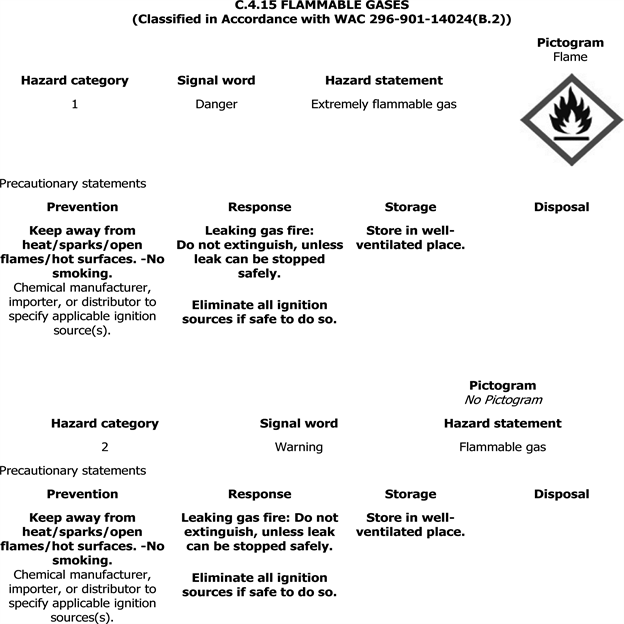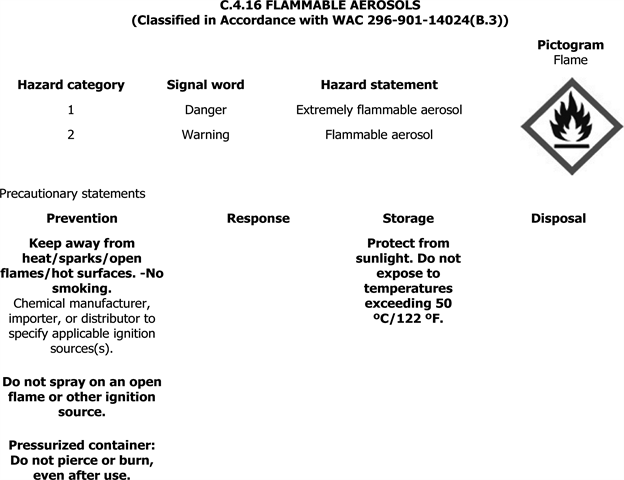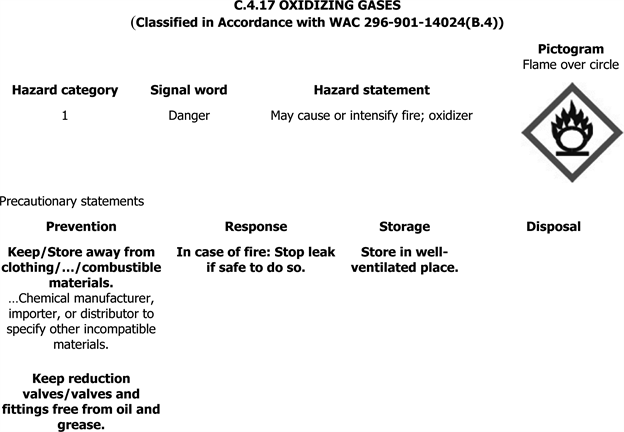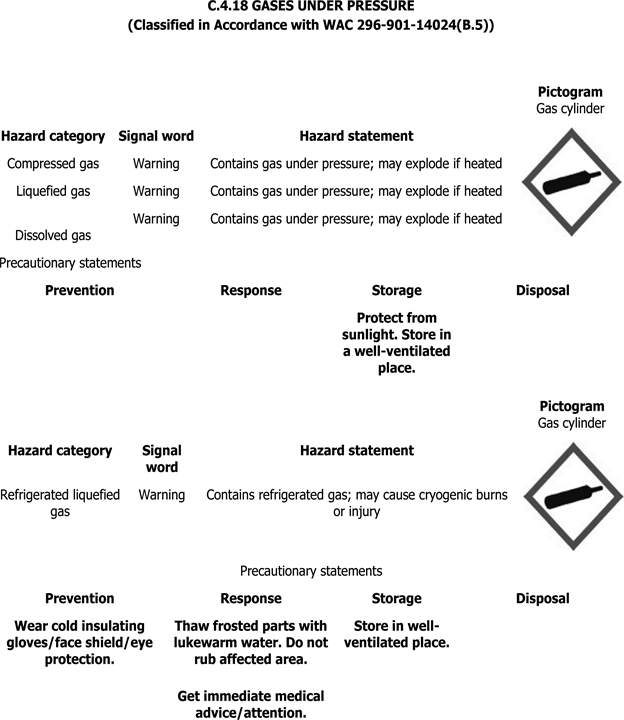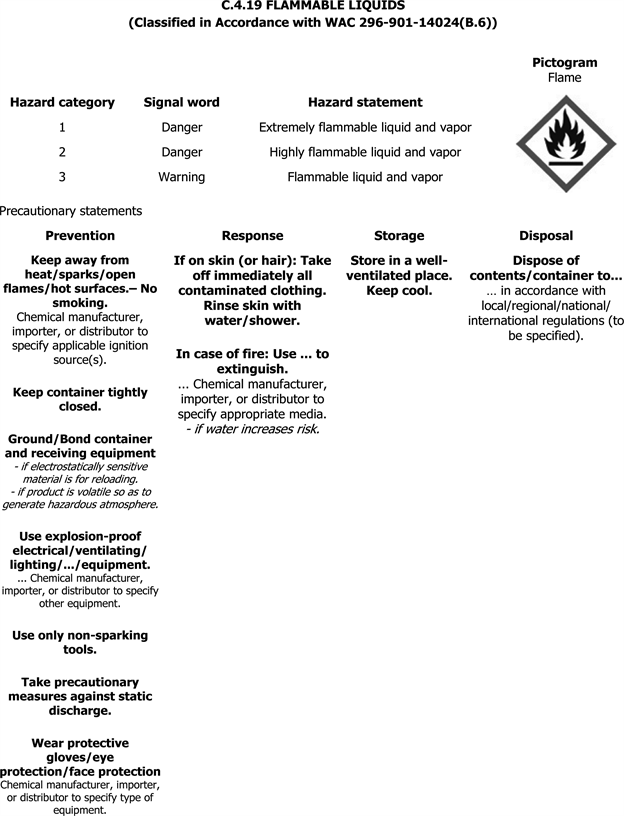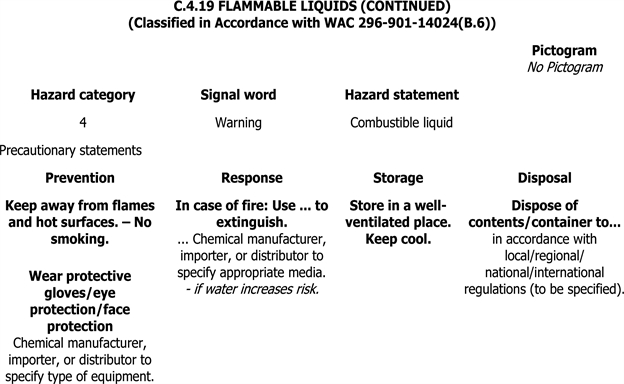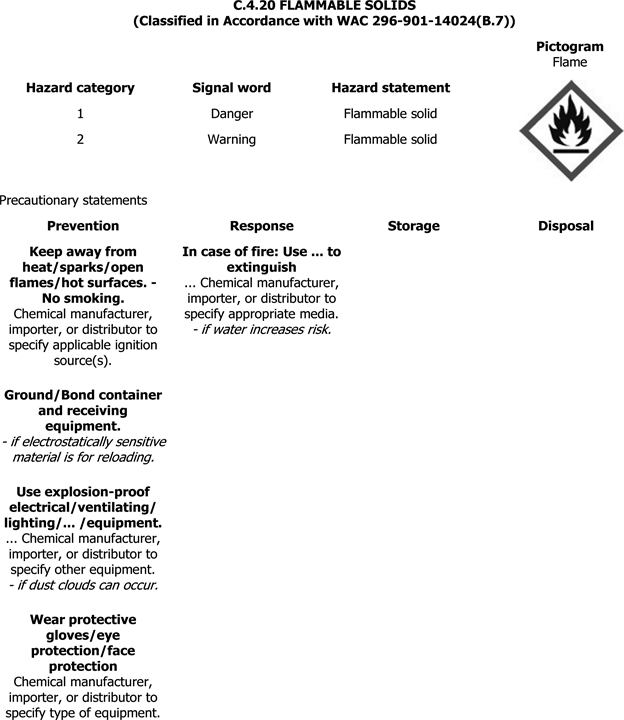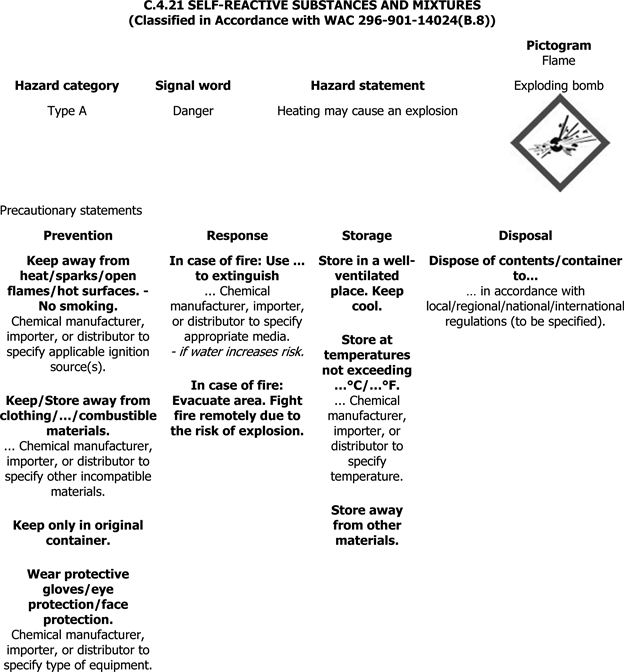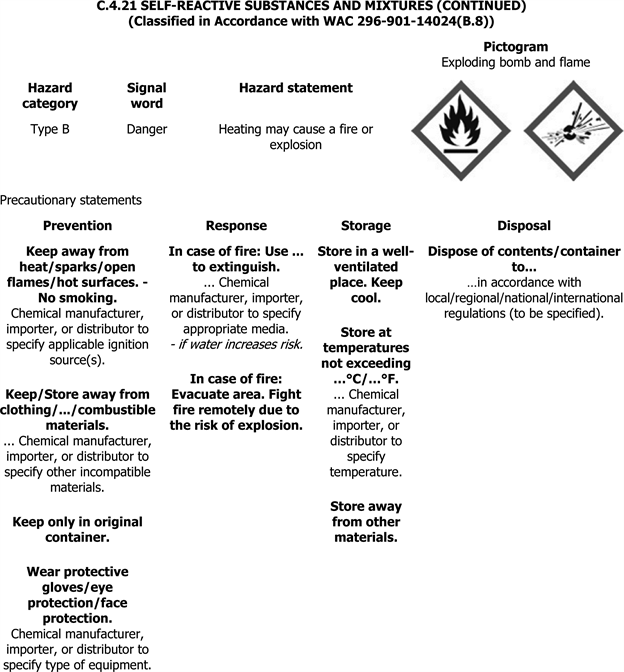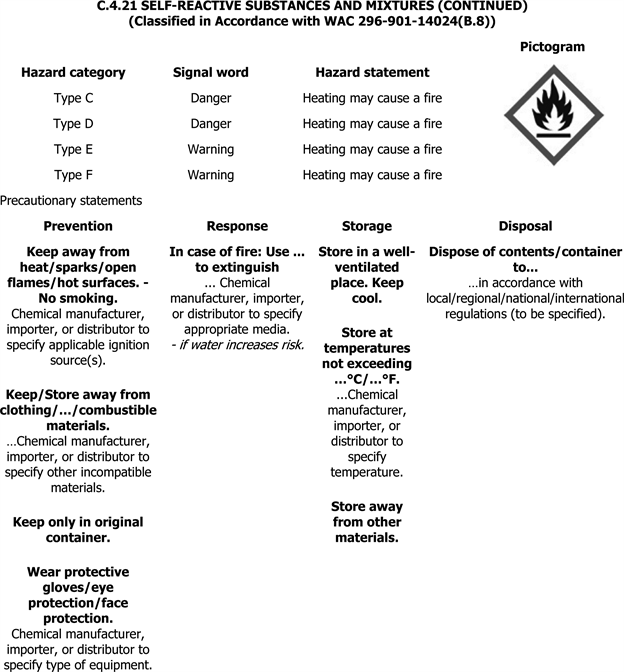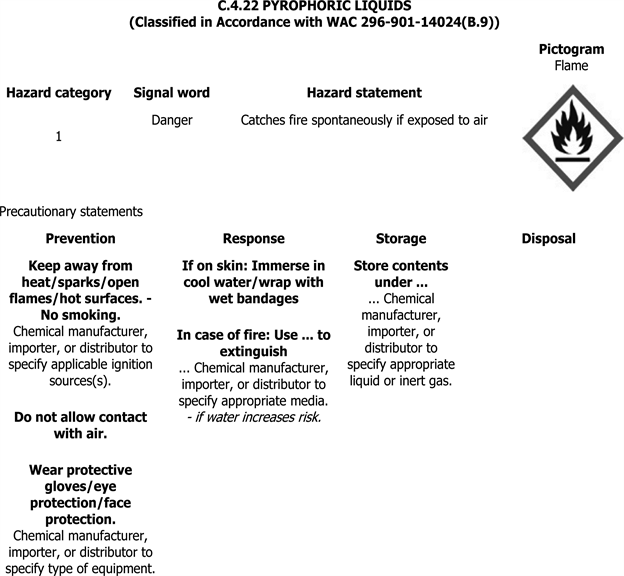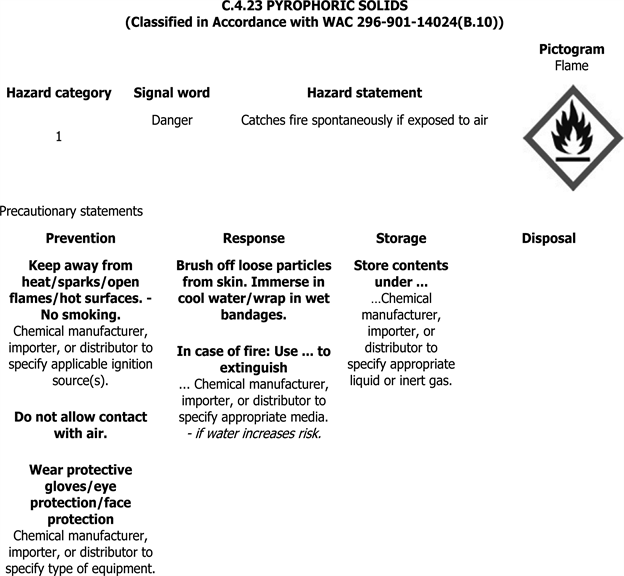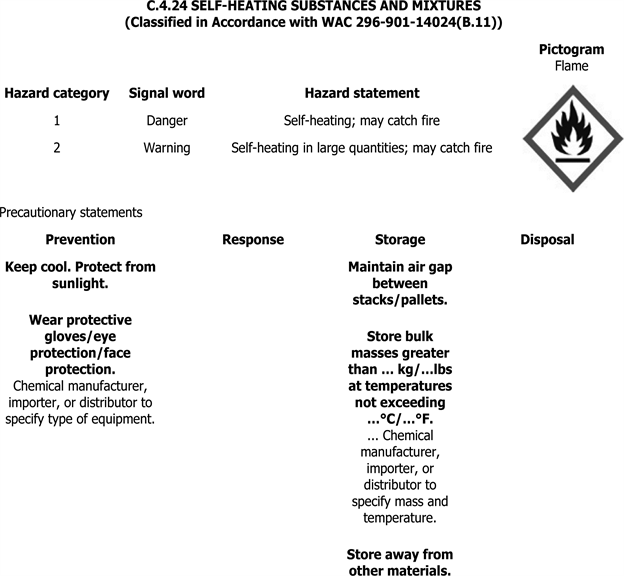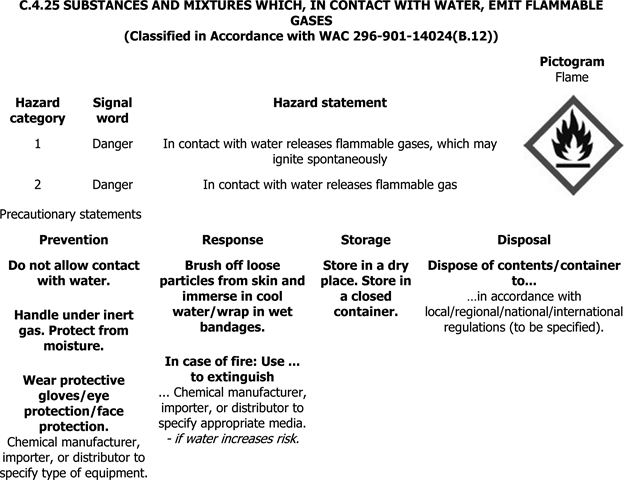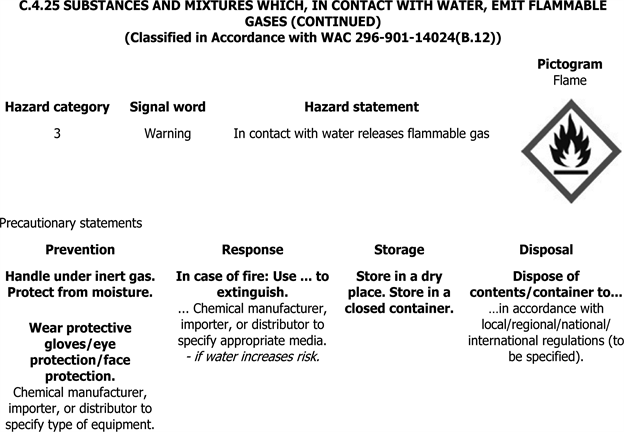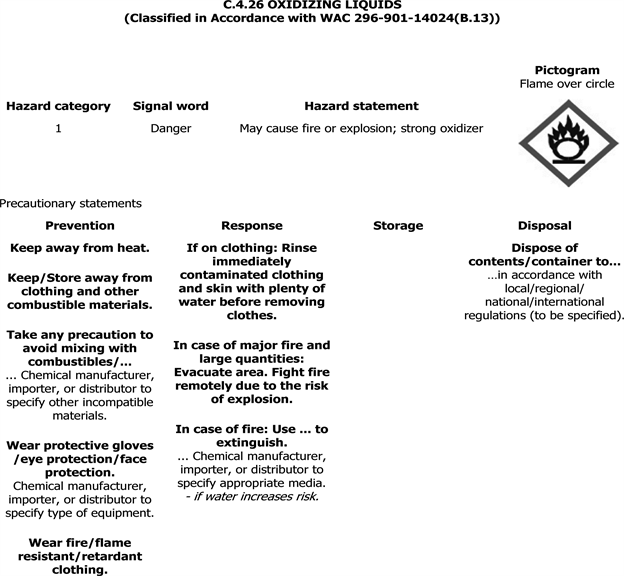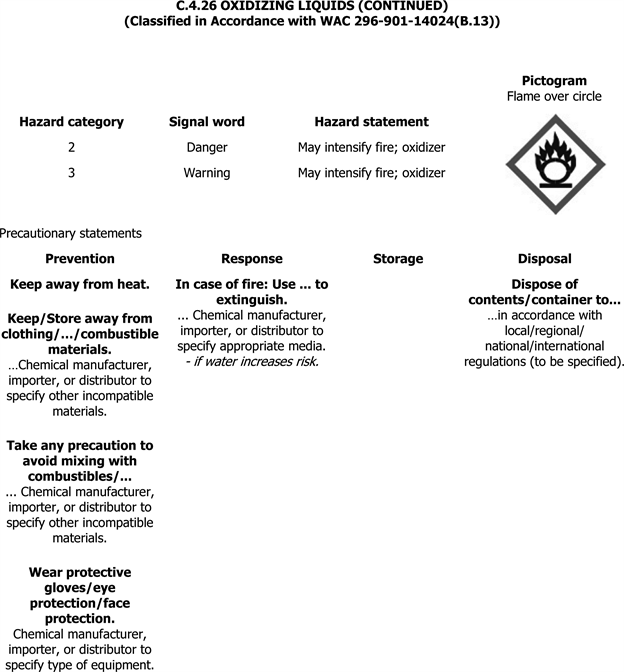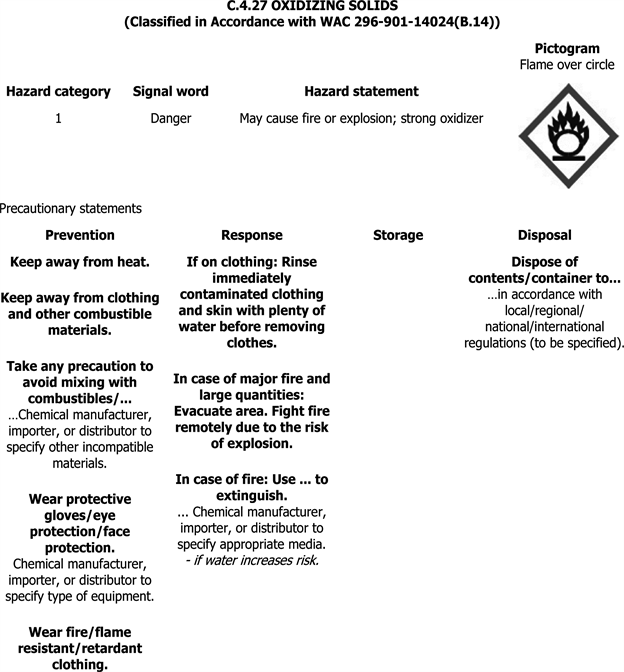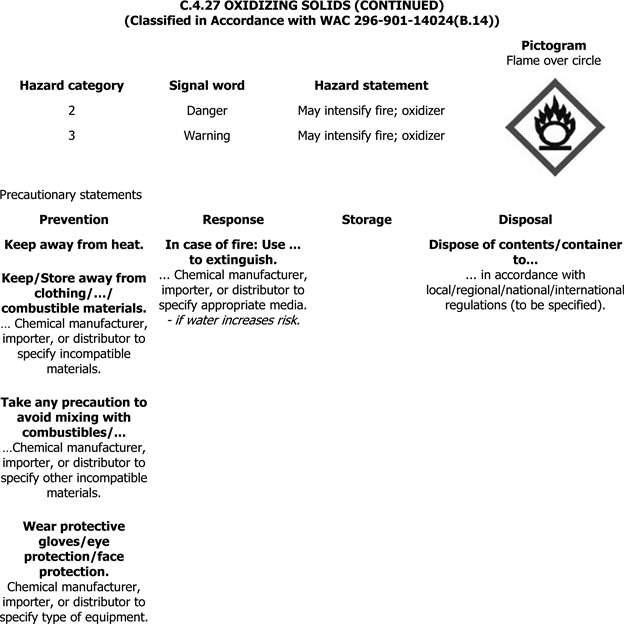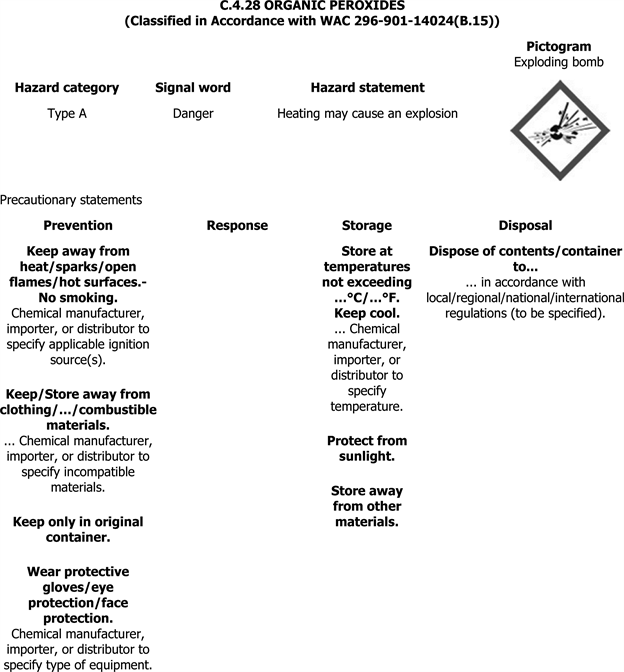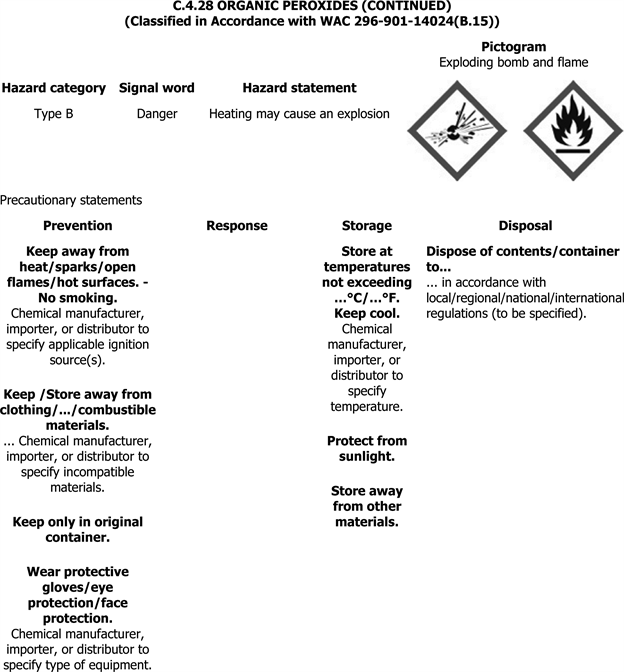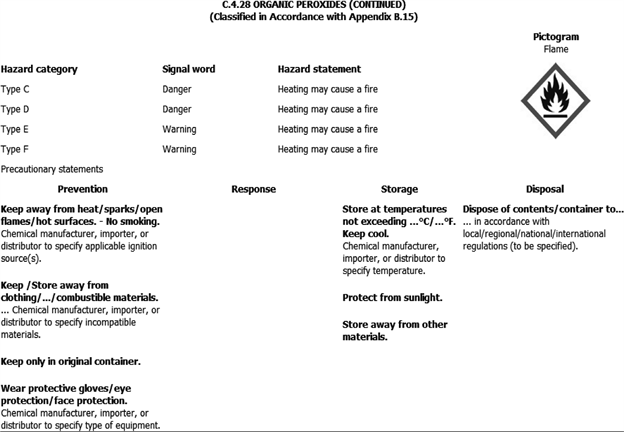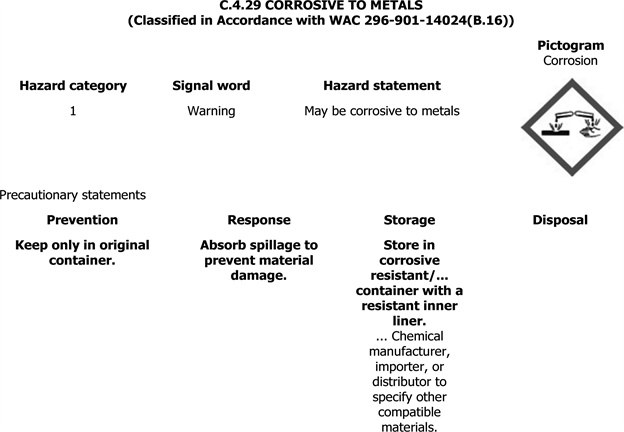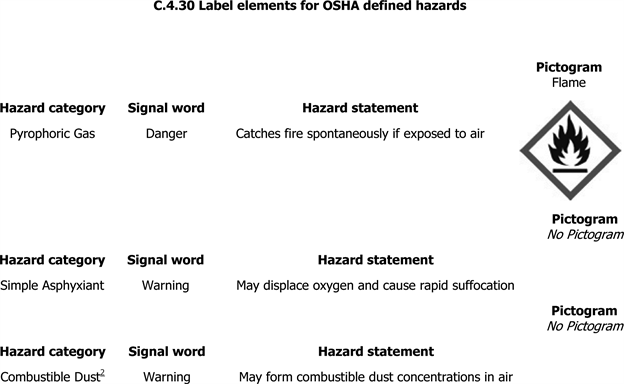C.1 The label for each hazardous chemical must include the product identifier used on the safety data sheet.
C.1.1 The labels on shipped containers must also include the name, address, and telephone number of the chemical manufacturer, importer, or responsible party.
C.2 The label for each hazardous chemical that is classified must include the signal word, hazard statement(s), pictogram(s), and precautionary statement(s) specified in C.4 for each hazard class and associated hazard category, except as provided for in C.2.1 through C.2.4.
C.2.1 Precedence of hazard information
C.2.1.1 If the signal word "Danger" is included, the signal word "Warning" must not appear.
C.2.1.2 If the skull and crossbones pictogram is included, the exclamation mark pictogram must not appear where it is used for acute toxicity.
C.2.1.3 If the corrosive pictogram is included, the exclamation mark pictogram must not appear where it is used for skin or eye irritation.
C.2.1.4 If the health hazard pictogram is included for respiratory sensitization, the exclamation mark pictogram must not appear where it is used for skin sensitization or for skin or eye irritation.
C.2.2 Hazard statement text
C.2.2.1 The text of all applicable hazard statements must appear on the label, except as otherwise specified. The information in italics must be included as part of the hazard statement as provided. For example: "causes damage to organs (state all organs affected) through prolonged or repeated exposure (state route of exposure if no other routes of exposure cause the hazard)". Hazard statements may be combined where appropriate to reduce the information on the label and improve readability, as long as all of the hazards are conveyed as required.
C.2.2.2 If the chemical manufacturer, importer, or responsible party can demonstrate that all or part of the hazard statement is inappropriate to a specific substance or mixture, the corresponding statement may be omitted from the label.
C.2.3 Pictograms
C.2.3.1 Pictograms must be in the shape of a square set at a point and must include a black hazard symbol on a white background with a red frame sufficiently wide to be clearly visible. A square red frame set at a point without a hazard symbol is not a pictogram and is not permitted on the label.
C.2.3.2 One of eight standard hazard symbols must be used in each pictogram. The eight hazard symbols are depicted in Figure C.1. A pictogram using the exclamation mark symbol is presented in Figure C.2, for the purpose of illustration.
C.2.3.3 Where a pictogram required by the Department of Transportation under Title 49 of the Code of Federal Regulations appears on a shipped container, the pictogram specified in C.4 for the same hazard must not appear.
C.2.4 Precautionary statement text
C.2.4.1 There are four types of precautionary statements presented, "prevention," "response," "storage," and "disposal." The core part of the precautionary statement is presented in bold print. This is the text, except as otherwise specified, that must appear on the label. Where additional information is required, it is indicated in plain text.
C.2.4.2 When a backslash or diagonal mark (/) appears in the precautionary statement text, it indicates that a choice has to be made between the separated phrases. In such cases, the chemical manufacturer, importer, or responsible party can choose the most appropriate phrase(s). For example, "Wear protective gloves/protective clothing/eye protection/face protection" could read "wear eye protection".
C.2.4.3 When three full stops (…) appear in the precautionary statement text, they indicate that all applicable conditions are not listed. For example, in "Use explosion-proof electrical/ventilating/lighting/…/equipment", the use of "…" indicates that other equipment may need to be specified. In such cases, the chemical manufacturer, importer, or responsible party can choose the other conditions to be specified.
C.2.4.4 When text in italics is used in a precautionary statement, this indicates specific conditions applying to the use or allocation of the precautionary statement. For example, "Use explosion-proof electrical/ventilating/lighting/…/equipment" is only required for flammable solids "if dust clouds can occur". Text in italics is intended to be an explanatory, conditional note and is not intended to appear on the label.
C.2.4.5 Where square brackets ([ ]) appear around text in a precautionary statement, this indicates that the text in square brackets is not appropriate in every case and must be used only in certain circumstances. In these cases, conditions for use explaining when the text must be used are provided. For example, one precautionary statement states: "[In case of inadequate ventilation] wear respiratory protection." This statement is given with the condition for use "- text in square brackets may be used if additional information is provided with the chemical at the point of use that explains what type of ventilation would be adequate for safe use". This means that, if additional information is provided with the chemical explaining what type of ventilation would be adequate for safe use, the text in square brackets must be used and the statement would read: "In case of inadequate ventilation wear respiratory protection." However, if the chemical is supplied without such ventilation information, the text in square brackets must not be used, and the precautionary statement must read: "Wear respiratory protection."
C.2.4.6 Precautionary statements may be combined or consolidated to save label space and improve readability. For example, "Keep away from heat, sparks and open flame," "Store in a well-ventilated place" and "Keep cool" can be combined to read "Keep away from heat, sparks and open flame and store in a cool, well-ventilated place."
C.2.4.7 In most cases, the precautionary statements are independent (e.g., the phrases for explosive hazards do not modify those related to certain health hazards, and products that are classified for both hazard classes must bear appropriate precautionary statements for both). Where a chemical is classified for a number of hazards, and the precautionary statements are similar, the most stringent must be included on the label (this will be applicable mainly to preventive measures). An order of precedence may be imposed by the chemical manufacturer, importer or responsible party in situations where phrases concern "Response." Rapid action may be crucial. For example, if a chemical is carcinogenic and acutely toxic, rapid action may be crucial, and first aid measures for acute toxicity will take precedence over those for long-term effects. In addition, medical attention to delayed health effects may be required in cases of incidental exposure, even if not associated with immediate symptoms of intoxication.
C.2.4.8 If the chemical manufacturer, importer, or responsible party can demonstrate that a precautionary statement is inappropriate to a specific substance or mixture, the precautionary statement may be omitted from the label.
C.3 Supplementary hazard information
C.3.1 To ensure that non-standardized information does not lead to unnecessarily wide variation or undermine the required information, supplementary information on the label is limited to when it provides further detail and does not contradict or cast doubt on the validity of the standardized hazard information.
C.3.2 Where the chemical manufacturer, importer, or distributor chooses to add supplementary information on the label, the placement of supplemental information must not impede identification of information required by this section.
C.3.3 Where an ingredient with unknown acute toxicity is used in a mixture at a concentration ≥ 1%, and the mixture is not classified based on testing of the mixture as a whole, a statement that X% of the mixture consists of ingredient(s) of unknown acute toxicity is required on the label.
C.4 REQUIREMENTS FOR SIGNAL WORDS, HAZARD STATEMENTS, PICTOGRAMS, AND PRECAUTIONARY STATEMENTS
1 | Except no pictogram is required for explosives that are 1.4S small arms ammunition and components thereof. Labels for 1.4S small arms ammunition and components shall include appropriate precautionary statements. |
2 | The chemical manufacturer or importer shall label chemicals that are shipped in dust form, and present a combustible dust hazard in that form when used downstream, under WAC 296-901-14012(1); 2) the chemical manufacturer or importer shipping chemicals that are in a form that is not yet a dust must provide a label to customers under WAC 296-901-14012(4) if, under normal conditions of use, the chemicals are processed in a downstream workplace in such a way that they present a combustible dust hazard; and 3) the employer shall follow the workplace labeling requirements under WAC 296-901-14012(6) where combustible dust hazards are present. |
